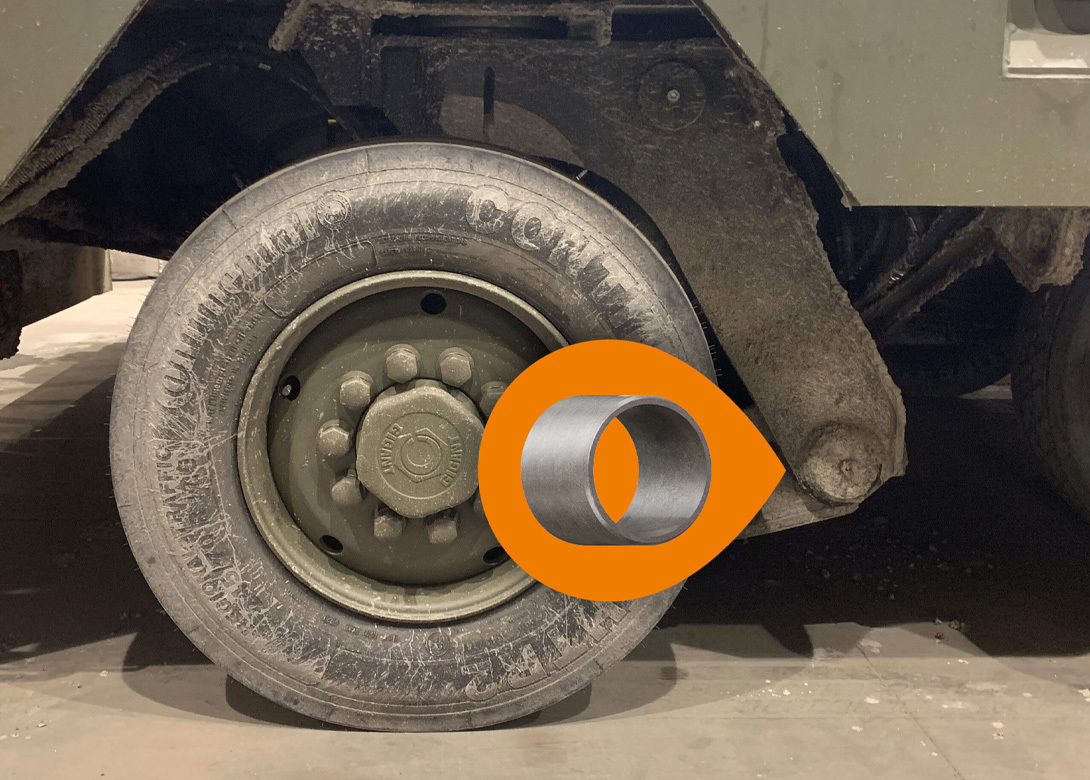
Designed to reduce the time-consuming maintenance of construction and agricultural machinery, Igus offers its iglidur tribopolymer plain bearings which promise to cut costs and ensure a maintenance-free operation.
When servicing construction and agricultural machinery, lubricating the bearing points is one of the most time-consuming tasks. Insufficiently lubricated and maintained bearings can cause damage to expensive shafts which can impair the function of critical machine parts. In the worst case, there is a risk of machine failure.
Failures and maintenance-related downtime due to insufficient lubrication can be reduced. For metallic bearings, this can be done by a central lubrication systems that continuously supplies the bearing positions with grease. However, these systems incur additional costs and require additional maintenance, they ultimately harm the environment and not all bearing positions can be reached with this method.
Due to their familiar properties, lubricated metallic bearings are well established in the field of high loads. Until now, there was no way around grease – firstly, it is necessary for the bearing’s function, and secondly it protects the shaft or moving part from corrosion. Therefore, if switching to a lubrication-free and maintenance-free solution is to be made, the nature of shafts and fixtures must also be factored in. Corrosion protection waxes or nitrided (nitride coated) surfaces can be cost-effective and efficient solutions.
It is important that the bearings can operate in a corrosion-free environment, because by dispensing with lubricant, the shaft and fixture are no longer protected by grease. A one-for-one replacement is therefore not possible for all bearing positions. If the shaft has to be lubricated once, igus GmbH offers iglidur plain bearings that are manufactured with a felt seal, which ensure that the grease remains in the bearing position. At the same time, the seal protects against penetration of sand and dirt.
igus has developed two plain bearing materials made of high-strength woven fabric – TX1 and TX2. These are used when particularly high loads occur and injection-moulded plain bearings reach their load limits. Here, the specially interwoven, high tensile strength filaments ensure maximum wear resistance. “Both materials can be used to service applications where forces of up to 200MPa must be absorbed. Deciding between the materials depends on the condition of the shaft surface,” explains Rob Dumayne.
The difference between the two materials is primarily in the structure of the plain bearings, which results in varying wear behaviour. Both types were extensively tested on indoor and outdoor test rigs. Igus states “pivot tests showed that igutex TX2 plain bearings in conjunction with hard-chromed shafts are about 3.5 times more wear-resistant than plain bearings made of igutex TX1. On the other hand, shafts with no additional surface treatment or coating but with bearings made of igutex TX1, deliver better results”.
Specially designed for heavy-duty applications, igus has also developed all-rounder materials, such as the tested iglidur G material, which can absorb forces of up to 80MPa. “Many equate heavy load with heavy-duty, however high load is only one part of heavy-duty,” says Rob Dumayne, director of drytech products at igus UK. “This term refers to particularly extreme demands on the plain bearings, that do not always have to be high loads. Moisture, dirt, shocks, vibrations or even edge loads all qualify as extreme challenges for the bearings.”
The company states that all igus materials are characterised by their dry-operating properties as well as long service life that can be calculated in advance. They are resistant to dust and dirt, making them ideal for use in construction and agricultural machinery as well as in commercial vehicles.

Becca is the latest member to join our team and is eager to get stuck into the world of fasteners. She brings an enthusiastic and fresh outlook on what we do editorially and will be leading our social media activity – including sourcing material, editing articles and posting online.






